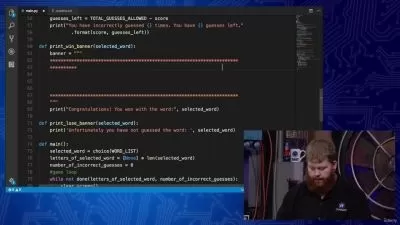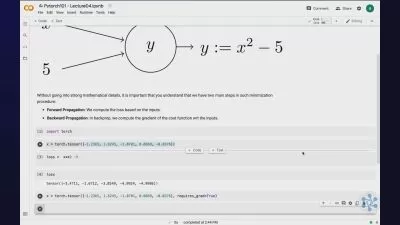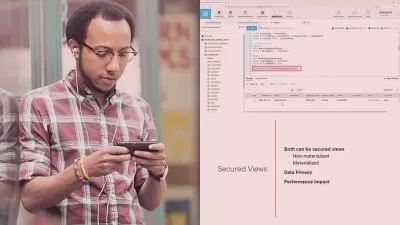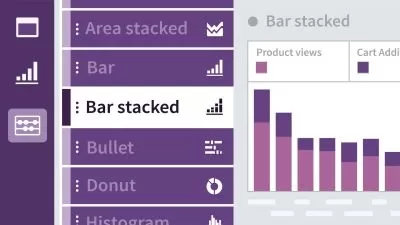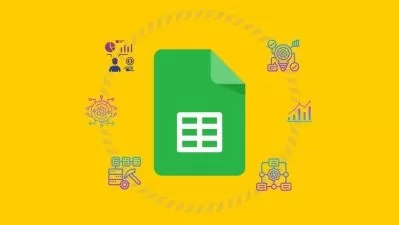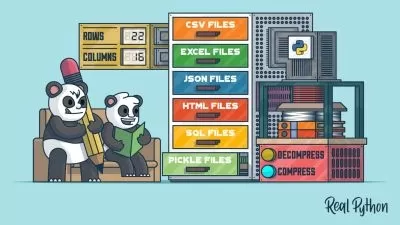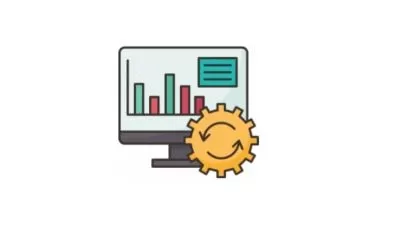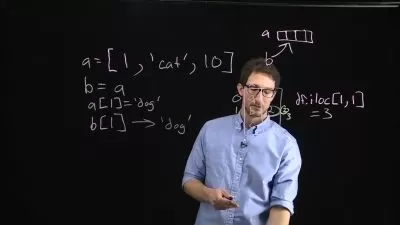00001 Introduction to Data Analysis with Pandas and Python.mp4
12:18
00002 MacOS - Download the Anaconda Distribution Our Python Development Environment.mp4
04:22
00003 MacOS - Install Anaconda Distribution.mp4
08:52
00004 MacOS - Access the Terminal Application.mp4
08:35
00005 MacOS - Create Conda Environment and Install Pandas and Jupyter Notebook.mp4
13:09
00006 MacOS - Unpack Course Materials + The Start and Shutdown Process.mp4
12:34
00007 Windows - Download the Anaconda Distribution.mp4
04:38
00008 Windows - Install Anaconda Distribution.mp4
06:42
00009 Windows - Create Conda Environment and Install Pandas and Jupyter Notebook.mp4
18:14
00010 Windows - Unpack Course Materials + The Start and Shutdown Process.mp4
13:16
00011 Introduction to the Jupyter Notebook Interface.mp4
09:54
00012 Cell Types and Cell Modes in Jupyter Notebook.mp4
07:39
00013 Code Cell Execution in Jupyter Notebook.mp4
03:15
00014 Popular Keyboard Shortcuts in Jupyter Notebook.mp4
03:44
00015 Import Libraries into Jupyter Notebook.mp4
08:34
00016 Introduction to the Python Crash Course.mp4
03:37
00017 Comments.mp4
03:21
00018 Basic Data Types.mp4
10:50
00019 Operators.mp4
15:38
00020 Variables.mp4
07:51
00021 Built-In Functions.mp4
10:44
00022 Custom Functions.mp4
16:36
00023 String Methods.mp4
20:54
00024 Lists.mp4
13:20
00025 Index Positions and Slicing.mp4
15:58
00026 Dictionaries.mp4
15:25
00027 Create Jupyter Notebook for the Series Module.mp4
02:18
00028 Create a Series Object from a Python List.mp4
10:35
00029 Create a Series Object from a Python Dictionary.mp4
03:08
00030 Introduction to Attributes on a Series Object.mp4
07:20
00031 Introduction to Methods on a Series Object.mp4
04:44
00032 Parameters and Arguments.mp4
10:12
00033 Create Series from a Dataset with the pd.read csv Method.mp4
15:05
00034 Use the Head and Tail Methods to Return Rows from the Beginning and End of a Dataset.mp4
03:45
00035 Passing Pandas Objects to Python Built-In Functions.mp4
05:23
00036 Accessing More Series Attributes.mp4
06:16
00037 Use the sort values Method to Sort a Series in Ascending or Descending Order.mp4
06:07
00038 Use the inplace Parameter to Permanently Mutate a Pandas Data Structure.mp4
05:10
00039 Use the sort index Method to Sort the Index of a Pandas Series Object.mp4
04:40
00040 Use Python s in Keyword to Check for Inclusion in Series Values or Index.mp4
04:03
00041 Extract Series Values by Index Position.mp4
04:17
00042 Extract Series Values by Index Label.mp4
10:38
00043 Use the get Method to Retrieve a Value for an Index label in a Series.mp4
09:41
00044 Math Methods on Series Objects.mp4
05:42
00045 Use the idxmax and idxmin Methods to Find Index of Greatest or Smallest Value.mp4
03:13
00046 Use the value counts Method to See Counts of Unique Values within a Series.mp4
03:41
00047 Use the apply Method to Invoke a Function on Every Series Values.mp4
06:48
00048 The Series map Method.mp4
06:56
00049 Introduction to DataFrames I Module.mp4
09:50
00050 Shared Methods and Attributes Between Series and DataFrames.mp4
13:58
00051 Differences Between Shared Methods.mp4
06:51
00052 Select One Column from a DataFrame.mp4
08:00
00053 Select Two or More Columns from a DataFrame.mp4
05:14
00054 Add a New Column to DataFrame.mp4
08:06
00055 Broadcasting Operations on DataFrames.mp4
09:09
00056 A Review of the value counts Method.mp4
03:57
00057 Drop DataFrame Rows with Null Values with the dropna Method.mp4
06:43
00058 Fill in Null DataFrame Values with the fillna Method.mp4
04:28
00059 Convert DataFrame Column Types with the astype Method.mp4
10:41
00060 Sort a DataFrame with the sort values Method Part I.mp4
05:49
00061 Sort a DataFrame with the sort values Method Part II.mp4
04:16
00062 Sort DataFrame Index with the sort index Method.mp4
03:01
00063 Rank Series Values with the rank Method.mp4
05:56
00064 This Module s Dataset + Memory Optimization.mp4
15:54
00065 Filter a DataFrame Based on a Condition.mp4
13:00
00066 Filter DataFrame with More than One Condition AND.mp4
04:42
00067 Filter DataFrame with More than One Condition OR.mp4
08:37
00068 Check for Inclusion with the isin Method.mp4
06:20
00069 Check for Null and Present DataFrame Values with the isnull and notnull Methods.mp4
05:09
00070 Check for Inclusion Within a Range of Values with the between Method.mp4
06:53
00071 Check for Duplicate DataFrame Rows with the duplicated Method.mp4
09:07
00072 Delete Duplicate DataFrame Rows with the drop duplicates Method.mp4
08:18
00073 Identify and Count Unique Values with the unique and nunique Methods.mp4
04:24
00074 Introduction to the DataFrames III Module + Import Dataset.mp4
04:57
00075 Use the set index and reset index Methods to Define a new DataFrame Index.mp4
07:28
00076 Retrieve Rows by Index Label with loc Accessor.mp4
12:44
00077 Retrieve Rows by Index Position with iloc Accessor.mp4
07:26
00078 Passing Second Arguments to the loc and iloc Accessors.mp4
09:13
00079 Set New Value for a Specific Cell or Cells in a Row.mp4
04:36
00080 Set Multiple Values in a DataFrame.mp4
06:10
00081 Rename Index Labels or Columns in a DataFrame.mp4
09:36
00082 Delete Rows or Columns from a DataFrame.mp4
07:31
00083 Create Random Sample with the sample Method.mp4
04:45
00084 Use the nsmallest nlargest Methods to Get Rows with Smallest Largest Values..mp4
05:37
00085 Filter a DataFrame with the where Method.mp4
05:05
00086 Filter a DataFrame with the query Method.mp4
09:10
00087 A Review of the apply Method on a Pandas Series Object.mp4
05:55
00088 Apply a Function to Every DataFrame Row with the apply Method.mp4
06:51
00089 Create a Copy of a DataFrame with the copy Method.mp4
07:07
00090 Introduction to the Working with Text Data Section.mp4
06:12
00091 Common String Methods - lower upper title and len.mp4
07:16
00092 Use the str.replace Method to Replace All Occurrences of a Character with Another.mp4
08:10
00093 Filter a DataFrame s Rows with String Methods.mp4
06:46
00094 More DataFrame String Methods - strip lstrip and rstrip.mp4
04:33
00095 Invoke String Methods on DataFrame Index and Columns.mp4
05:32
00096 Split Strings by Characters with the str.split Method.mp4
08:44
00097 More Practice with the str.split Method on a Series.mp4
06:03
00098 Exploring the expand and n Parameters of the str.split Method.mp4
07:02
00099 Introduction to the MultiIndex Module.mp4
04:52
00100 Create a MultiIndex on a DataFrame with the set index Method.mp4
10:39
00101 Extract Index Level Values with the get level values Method.mp4
04:21
00102 Change Index Level Name with the set names Method.mp4
04:17
00103 The sort index Method on a MultiIndex DataFrame.mp4
08:26
00104 Extract Rows from a MultiIndex DataFrame.mp4
11:01
00105 The transpose Method on a MultiIndex DataFrame.mp4
08:18
00106 The .swaplevel Method.mp4
03:31
00107 The .stack Method.mp4
06:03
00108 The .unstack Method Part 1.mp4
03:40
00109 The .unstack Method Part 2.mp4
06:11
00110 The .unstack Method Part 3.mp4
05:10
00111 The pivot Method.mp4
06:36
00112 Use the pivot table Method to Create an Aggregate Summary of a DataFrame.mp4
10:18
00113 Use the pd.melt Method to Create a Narrow Dataset from a Wide One.mp4
06:01
00114 Introduction to the GroupBy Module.mp4
07:43
00115 First Operations with the GroupBy Object.mp4
09:35
00116 Retrieve a Group from a GroupBy Object with the get group Method.mp4
03:48
00117 Methods on the GroupBy Object and DataFrame Columns.mp4
08:43
00118 Grouping by Multiple Columns.mp4
04:37
00119 The .agg Method.mp4
06:13
00120 Iterating Through Groups.mp4
09:06
00121 Introduction to the Merging Joining and Concatenating Section.mp4
04:52
00122 The pd.concat Method Part 1.mp4
05:23
00123 The pd.concat Method Part 2.mp4
07:08
00124 The append Method on a DataFrame.mp4
02:05
00125 Inner Joins Part 1.mp4
09:20
00126 Inner Joins Part 2.mp4
09:03
00127 Outer Joins.mp4
12:25
00128 Left Joins.mp4
09:21
00129 The left on and right on Parameters.mp4
08:56
00130 Merging by Indexes with the left index and right index Parameters.mp4
11:04
00131 The .join Method.mp4
03:17
00132 The pd.merge Method.mp4
03:08
00133 Introduction to the Working with Dates and Times Module.mp4
04:18
00134 Review of Python s Datetime Module.mp4
09:33
00135 The Pandas Timestamp Object.mp4
07:17
00136 The Pandas DateTimeIndex Object.mp4
05:25
00137 The pd.to datetime Method.mp4
11:13
00138 Create Range of Dates with the pd.date range Method Part 1.mp4
10:24
00139 Create Range of Dates with the pd.date range Method Part 2.mp4
09:06
00140 Create Range of Dates with the pd.date range Method Part 3.mp4
07:52
00141 The .dt Accessor.mp4
07:31
00142 Install Pandas-datareader Library.mp4
03:34
00143 Import Financial Dataset with pandas datareader Library.mp4
07:58
00144 Selecting Rows from a DataFrame with a DateTimeIndex.mp4
12:26
00145 Timestamp Object Attributes and Methods.mp4
09:43
00146 The pd.DateOffset Object.mp4
06:52
00147 Timeseries Offsets.mp4
12:33
00148 The Timedelta Object.mp4
08:24
00149 Timedeltas in a Dataset.mp4
09:32
00150 Introduction to the Input and Output Section.mp4
01:23
00151 Pass a URL to the pd.read csv Method.mp4
04:05
00152 Quick Object Conversions.mp4
07:04
00153 Export CSV File with the to csv Method.mp4
05:29
00154 Install xlrd and openpyxl Libraries to Read and Write Excel Files.mp4
04:05
00155 Import Excel File into Pandas with the read excel Method.mp4
09:24
00156 Export Excel File with the to excel Method.mp4
07:48
00157 Introduction to the Visualization Section.mp4
04:50
00158 Use the plot Method to Render a Line Chart.mp4
07:57
00159 Modifying Plot Aesthetics with matplotlib Templates.mp4
04:47
00160 Creating Bar Graphs to Show Counts.mp4
05:59
00161 Creating Pie Charts to Represent Proportions.mp4
04:51
00162 Introduction to the Options and Settings Module.mp4
01:44
00163 Changing Pandas Options with Attributes and Dot Syntax.mp4
06:59
00164 Changing Pandas Options with Methods.mp4
06:16
00165 The precision Option.mp4
03:12
00166 Conclusion.mp4
01:40
Data-Analysis-with-Pandas-and-Python-master.zip








